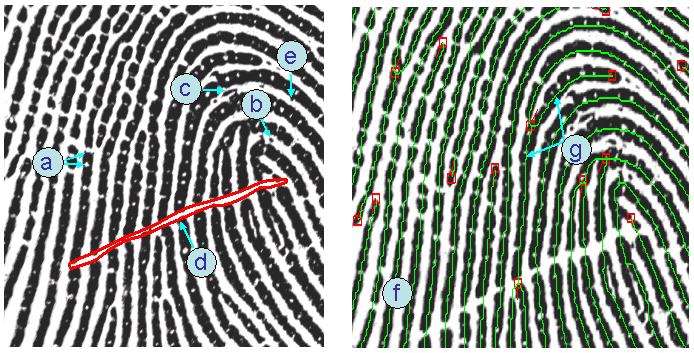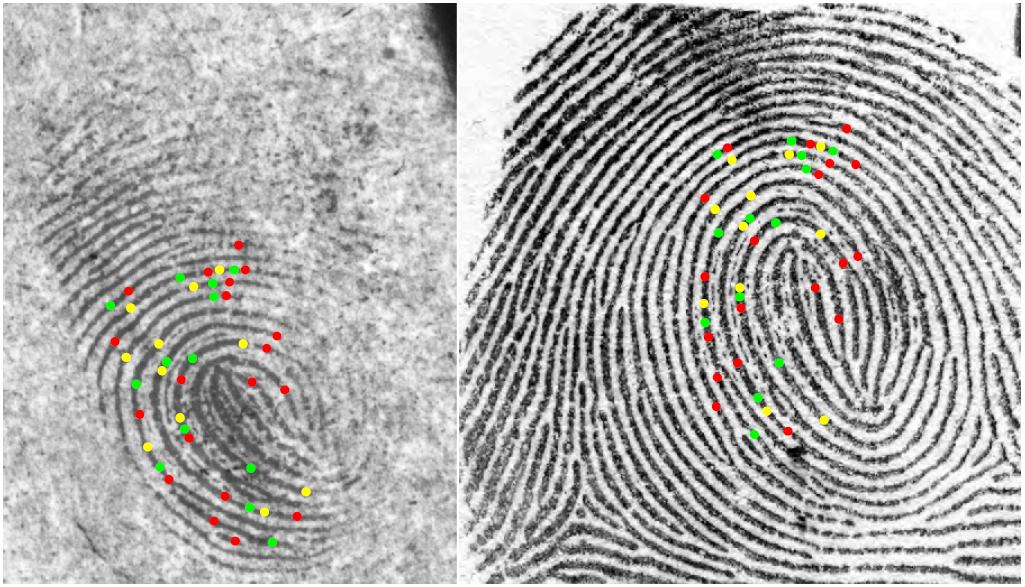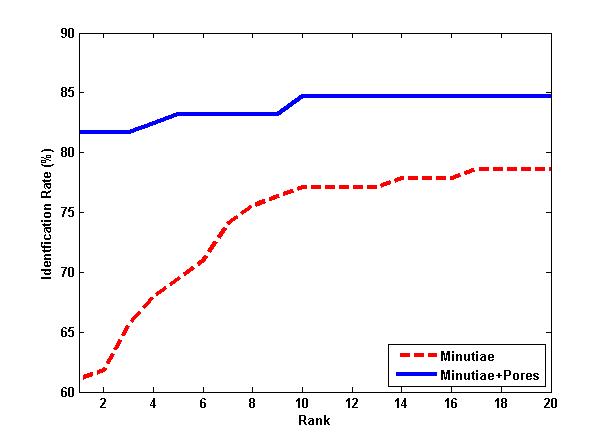 |
Current Projects
Extended Features in Fingerprints
Automatic Fingerprint Identification Systems (AFIS) have for a long time used only minutiae for fingerprint matching. But minutiae are only a small subset of fingerprint details routinely used by latent examiners for fingerprint matching. This has generated a lot of interest in extended feature set (EFS) with the aim of narrowing down the gap between the performance of AFIS and latent examiners. Typical extended features include dots, incipient ridges, pores, and ridge edge features, etc. See Fig. 1. Although some researchers reported the effectiveness of extended features in improving automatic fingerprint recognition accuracy by using their own private fingerprint databases and their own in-house fingerprint matchers, it is still not clear if and how much extended features can benefit AFIS when low quality fingerprint images (such as ink and latent fingerprints) are used and when commercial off-the-shelf (COTS) fingerprint matchers are used as the baseline. The goals of this project are: (i) design automatic extraction and matching algorithms for extended features (particularly, pores, dots, incipient ridges, and ridge edge protrusions), (ii) determine the utility of extended features in matching low quality fingerprints and latent fingerprints, (iii) explore how to incorporate extended features into existing AFIS, and (iv) make recommendations regarding the effectiveness of extended features. Fig. 2 shows the pores extracted by using our extraction algorithm in an example fingerprint image, and Fig. 3 shows the mated pores found by using our matching algorithm in a latent and its exemplar fingerprint. According to our preliminary results (see Fig. 4) of matching 131 partial inked fingerprint images against 4,180 rolled inked fingerprint images (all images are of 1,000 ppi), we observed that i) minutiae matchers usually work very well when there is a sufficient number of minutiae, and ii) the contribution of extended features is more effective for fingerprints which have few minutiae or low minutiae match scores.
 |
| Fig. 1: Extended features defined by CDEFFS (http://fingerprint.nist.gov/standard/cdeffs/). (a) Pores, (b) Dots, (c) Incipient ridges, (d) Creases, (e) Ridge edge protrusions, (f) Ridge skeletons, and (g) Ridge path segments. |
 |
| Fig. 2: Example pore extraction results. |
 |
| Fig. 3: Mated pores in a latent and its exemplar. |
 |
 |
| (a) |
(b) |
| Fig. 4: Performance of combining VeriFinger (a commercial minutiae matcher) and our proposed pore matcher. (a) The CMC curves in matching 131 partial ink fingerprint images against 4,180 rolled ink fingerprint images (all images are of 1,000ppi). (b) The minutiae match scores versus the number of minutiae in the fingerprints that are correctly identified at rank 1 by using merely minutiae and in those that are correctly identified at rank 1 after combining minutiae and pores. |
Q. Zhao, J. Feng, and A. K. Jain, "Latent Fingerprint Matching: Utility of Level 3 Features", MSU Technical Report. MSU-CSE-10-14, Aug. 2010.
Q. Zhao and A. K. Jain, "On the Utility of Extended Fingerprint Features:A Study on Pores", CVPR, Workshop on Biometrics, San Francisco, June 18, 2010.
|
 |



